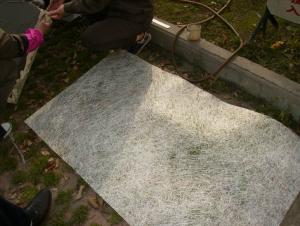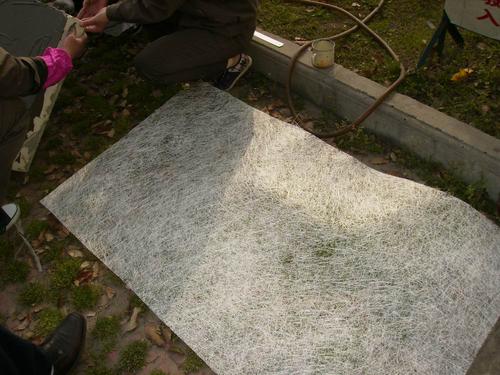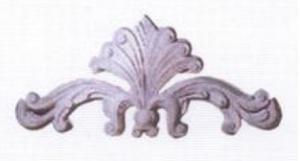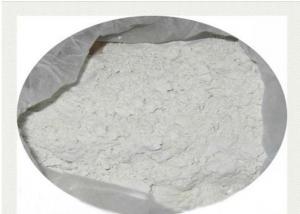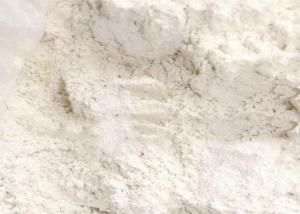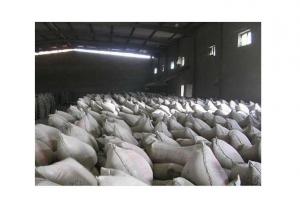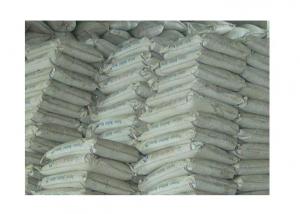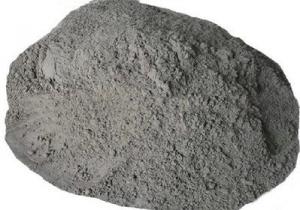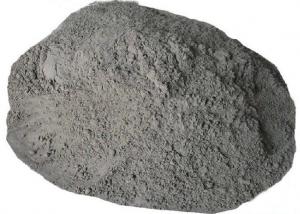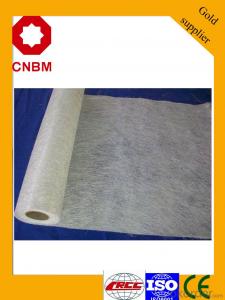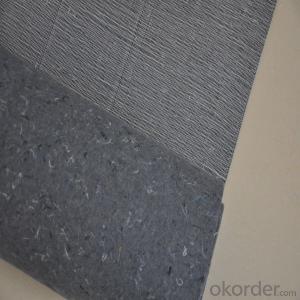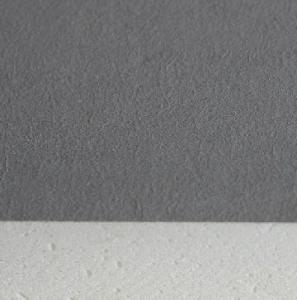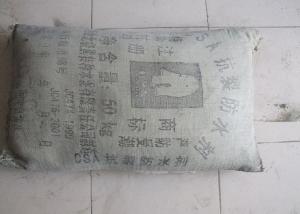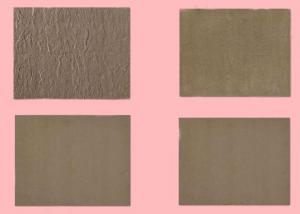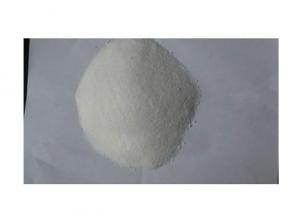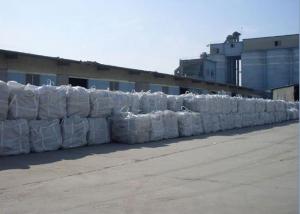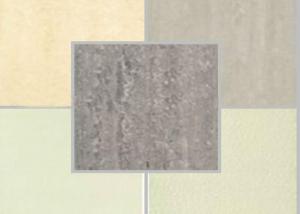AR fiberglass mat
- Loading Port:
- China Main Port
- Payment Terms:
- TT OR LC
- Min Order Qty:
- -
- Supply Capability:
- -
OKorder Service Pledge
OKorder Financial Service
You Might Also Like
HUIERJIE AR Fiberglass Mat is an engineered AR-stem designed for use in the reinforcement of very thin layer (5-25 mm). It may b
HUIERJIE AR Fiberglass Mat has a high elastic modulus and tensile strength, making them ideal as an effective reinforcement for cement matrices. They will not rot or corrode, and are unaffected by UV radiation, making them suitable for use with minimal cover.
HUIERJIE AR Fiberglass Matis available in a range of nominal weight: Standard is 120 G/M2. It is produced by chopping Huierjie AR-rovings into 20-50mm strands and forming into a mat with a suitable binder. The mat has an open construction to permit penetration by cement mortar. The engineered binder, which dissolves with water further, assists incorporation into a cement matrix.
HUIERJIE AR Fiberglass Matmay be used as a positioned reinforcement flooring systems.
- Q: The cement industry is an example of an undifferentiated oligopoly. The automobile industry is a differentiated oligopoly.
- does it matter to you what 'brand' of cement the builder of your appt block used? Or does it matter moer what brand is your car/dream car? Certainly the auto industry is more likely to advertise to the general public. Afterall the target of the cement companies is more likely to be developers, builders... Hence they would advertise in specialised journals rather than papers for the general public. Hence, I'd say that the auto industry is mor elikely to advertise using different media, whereas the cenment industry woud probably focus on industry publications.
- Q: hellow I gutted my bathroom all the wall board and I put up cement backerboard and want to know what I can use on the seams I have the fiberglass mesh tape , Joint compound is for wall board grout is for tile . Cement ? plaster ? I want it waterproof hydrolic cement ?Any help With this I would really appreciate.I'am an electrician not a wall trade and i want it to be right , from the jump. Thanks g, Singh
- Cement Backer Board Home Depot
- Q: (in pounds)
- I think there needs to be more data. For example, how much volume does one pound of cement fill....or something like that in order to complete the equation.
- Q: When installing fence posts for a 6 foot high privacy fence, I have gotten a few different inputs reference cement. Specifically, should what would you recommend and why: 1) dry pack cement into the hole and don't add water (let nature do it over time; does this jeopardize the plum of the posts initially); 2) dry pack cement into the hole and then add some water; 3) premix and then add to the hole; or 4) use quick drying cement.
- This Site Might Help You. RE: Fence Posts and Cement? When installing fence posts for a 6 foot high privacy fence, I have gotten a few different inputs reference cement. Specifically, should what would you recommend and why: 1) dry pack cement into the hole and don't add water (let nature do it over time; does this jeopardize the plum of the...
- Q: what're the important characterisitcs that is detrimental to the cement quality? is there a makeshift procedure/method that can be used instead to test for such characteristics?
- depends on what purpose you require the cement for.. slump test determines the workability (should be) there is also the cube test to test the strength of concrete. when your talking about cement i assume the cement powder right? There are many many test, depending on which aspect you want to test, and wheter you want a destructive or non-destructive test. you can email me if you want to know more.
- Q: its for my physics assignment..thanks!
- It can insulate against electromagnetic energy due to the limestone in the cement. Like ceramic. As far as being a temperature insulator, the cement wall gets very cold in the winter, so it's not a good insulator for temperature....if you wish to have a warm room. Heat is lost through the wall. Cement can dampen vibrations.
- Q: please tell me the order of increasing strength of cement mixtures1)cement mixed with river sand 2)cement with lime3)cement with pitsand4)cement with rice huski think order is 2 gt; 3gt;4gt;1 (strength)i am not sure.please tell me the correct answer along with explanation.
- we assume the cement (Portland cement) is of the correct ratio. we also assume we are talking about compressive strenght when we have just enough cement to fill the spaces between the rock we have reached the maximum strength. number 2. is no good as it reacts with the cement mixture number 4. allows for compression and cracking of the cement. number 3. .....pits i dont know what is pits number 1. is the same as rock ......the best here so .... the order my guess ....... 2,4,1
- Q: I need to repair my sidewalk and I've seen cement having these little cracks in it after it's dried; anyone knows of a way to prevent this?
- There are two things that you have to do: first, before you put pour the cement in, make sure the area it will be touching is wet - underneath, too. Then, after you put the cement down, make sure you tamp it well: this is not only to get out the air bubbles, but also to have the sand, well, fit more tightly together. Finally, and this is the most important part, make sure the cement stays wet for several days. Cement cures very slowly. It is not 100% completely cured even after a month! But in the first 48 - 72 hours, it is still going through quite an active process, and if it becomes too dry in this time, it will develop tiny fissures and be substantially weaker because of that. Plasters do the same thing, but there the culprit is often the surrounding plaster absorbing water from the wet plaster. That is not much of a problem with cement.
- Q: I have a small concrete slab (12' x 3.5') that I would like to cover with bricks. Should I use mortar or cement to affix them? We live in a cold and wet climate where summer max temp is 90F, winter min is -30F, lots of rain in spring and fall. Not sure if that makes a difference.
- This Site Might Help You. RE: lay bricks on concrete - use mortar or cement? I have a small concrete slab (12' x 3.5') that I would like to cover with bricks. Should I use mortar or cement to affix them? We live in a cold and wet climate where summer max temp is 90F, winter min is -30F, lots of rain in spring and fall. Not sure if that makes a difference.
- Q: Due to rising prices of building materials, which affected the progress of the project, need to make a report, such as how to write, and make a note, for example: cement prices nearly doubled
- As long as your ideas are correct, you can write it For reference only: XXXX Construction unit: According to the construction contract XX Article XX, cement unit price is now XXX yuan per ton, has exceeded the scope of the contract Please consider your unit practical difficulties, please give compensation for cement prices beyond the part of the cost Construction unit: XXX date
Send your message to us
AR fiberglass mat
- Loading Port:
- China Main Port
- Payment Terms:
- TT OR LC
- Min Order Qty:
- -
- Supply Capability:
- -
OKorder Service Pledge
OKorder Financial Service
Similar products
Hot products
Hot Searches
Related keywords
